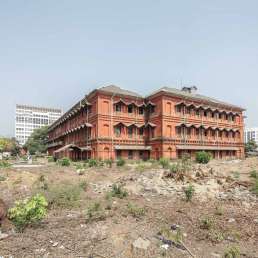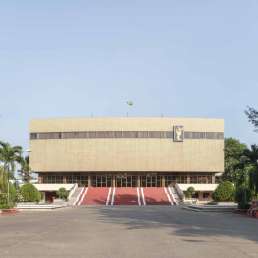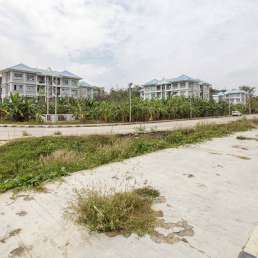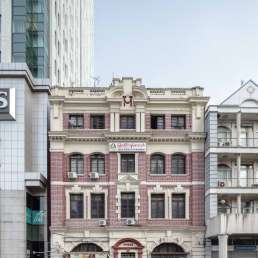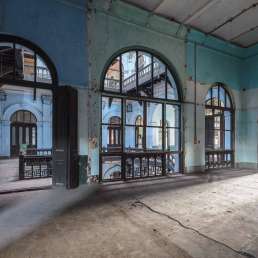Formerly: Central Telegraph Office
Address: 125–133 Pansodan Street
Year built: 1913–1917
Architect: John Begg (architect), Clark & Greig (contractors)
This large and stately building is John Begg’s third and last contribution to Yangon’s cityscape. It stands beside the High Court, designed by James Ransome, who preceded Begg as Consulting Architect to the Government of India.
As Sarah Rooney describes in 30 Heritage Buildings of Yangon, building the Telegraph Office on waterlogged grounds was a struggle. For the foundation to carry the weight of this four-storey building, wooden piles were sunk across the swampy area. They were then filled with sand, followed by a six-centimetre layer of cement.
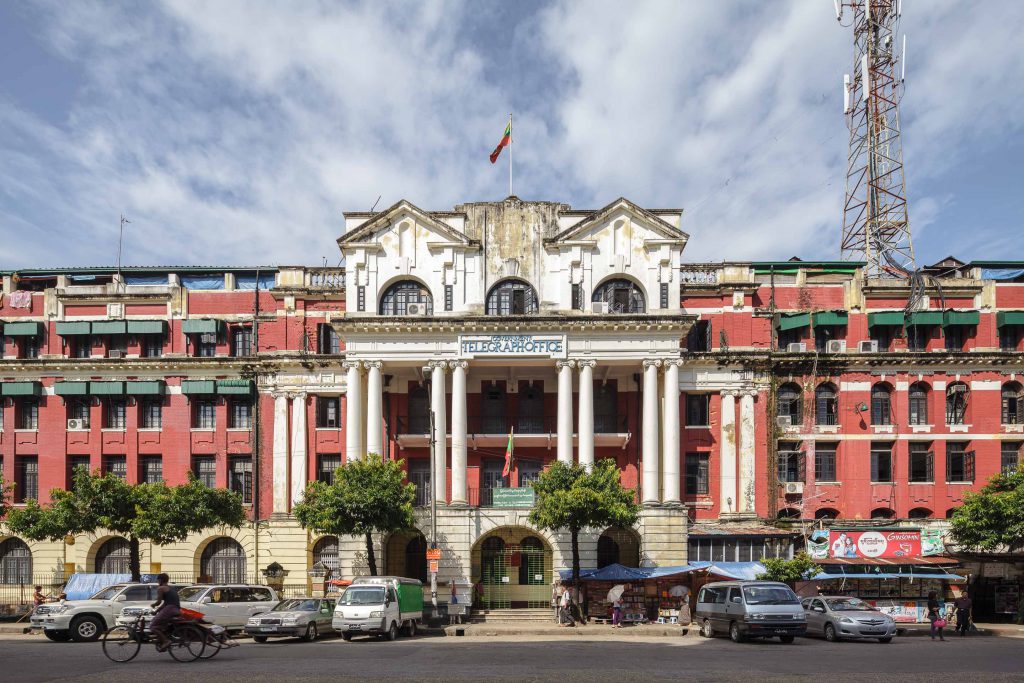
Today only a smaller portion of the Telegraph Office is accessible to the public on Mahabandoola Road. The rest of the building serves administrative functions. A huge antenna tower marks out the building from many parts of the city. Some of the windows are partially obscured by sunshades made of corrugated iron. In their elegant dark green they—surprisingly—don’t really jar with the façade. Book vendors, food stalls and grocers line most of the perimeter.
Burma’s many rivers and creeks added to the expense of building a reliable telegraph network. (The problem repeats itself today as newly licensed mobile operators try to build infrastructure across the country. They sometimes use water buffalos to carry telephone relays across rivers.) High masts and cables were needed to overcome these natural barriers. But this did not stop the medium’s development. By the late 1930s, there were 656 telegraph offices connected by more than 50,000 kilometres of wire. They covered the entire country, which in turn connected Burma with the world.
The fate of the medium is sealed, though. The world’s largest remaining telegraphy service, in India, closed in 2013. Meanwhile the building still has counters for sending telegrams, emails and “e-telegrams”, a Myanmar-only technology.
Myanmar is one of the least connected countries in the world in terms of mobile telephony—but it is catching up. In 2013, Norwegian company Telenor and the Qatari firm Ooredoo won the tender for a new mobile phone and internet network. In exchange, they committed to investing several billion dollars in infrastructure. This will include thousands of transmission towers, often in remote areas without regular electricity supply. Mobile phones and SIM cards, which were so rare they sold for hundreds of US dollars as late as 2012, are now as cheap as in any country—and sold everywhere in Myanmar. In Yangon the service seems to be improving, but slow data downloads remain a common complaint.
